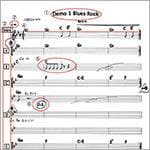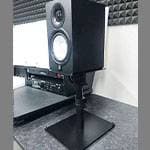Greetings! I'm Mark, a novice writer.
Today, I’d like to provide a detailed explanation of "fretboard lubricants" and share some tips and tricks for using them effectively.
Fretboard lubricants are still often misunderstood and misused maintenance items. This is a great opportunity to learn the proper way to use them!
■ What is Fretboard Lubricant?
Fretboard lubricant is a liquid applied to the strings of guitars and basses to enhance finger glide.
While it’s commonly referred to as "fretboard lubricant" because it’s applied to the fretboard side, technically, it’s more accurate to call it "string lubricant."
The primary ingredients used are silicone oil and mineral oil, both of which are generally safe for human use.
The former is a lubricant and rinse used in food processing machines, while the latter is so commonly used that it can be found in cosmetics and baby oil. It can be said that these oils are not something to be overly concerned about in terms of safety.
■ Role of Fingerboard Lubricant
As mentioned earlier, fingerboard lubricant is an item designed to make the strings smooth, enhancing finger movement and playability.
Guitar strings have surprisingly high friction coefficients, and after opening, they deteriorate further due to oxidation, resulting in a rougher texture.
The friction of the strings significantly affects finger positioning. It not only makes lateral movements, such as slides and glissandos, more difficult, but also compromises the ease of string release during chord changes and fast playing.
For advanced players with technical skills, as well as beginners who are still learning the basics, high string friction can be a significant hindrance. It's not uncommon for musicians to blame themselves, thinking, "I can't do it even with practice," when the real issue lies with the strings.
Fingerboard lubricant exists to address that unnecessary friction. While personal preferences regarding texture may vary, it’s an item that every player should try at least once. Applying it after playing can also provide the added benefit of rust protection.
■ Types and Usage of Fingerboard Lubricants
There are various types of containers for fingerboard lubricants, but here we'll introduce the two most common types.
First, we have the spray type, which has been widely used for many years. For older players, this is likely the go-to option when they think of fingerboard lubricants.
TONE / FINGER EASE Guitar String Cleaner and Fingerboard Lubrica
This product offers easy maintenance: simply spray it onto the strings and wipe off the excess with a cloth. However, using it this way can lead to oil splattering on the fingerboard, body, and even the floor of the room where you’re using it.
(I once slipped because the backstage of a live house was so slippery.)
Particularly with highly penetrating oils, there are concerns that they can remain deep in the fingerboard or even cause fret lifting. Because of this, some people argue that "fingerboard lubricants should never be used."
That said, as long as you spray carefully and target just the strings, there are ways to avoid issues. For instance, you can place a piece of paper between the strings and the fingerboard before spraying, use masking tape, or apply the liquid with a cloth that has been soaked without directly spraying it onto the strings. These methods can help prevent any problems.
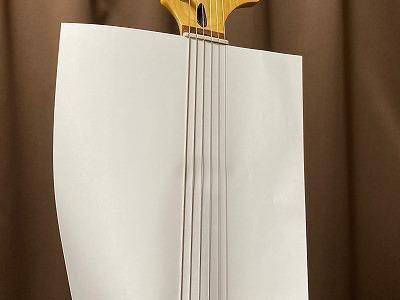
You don't have to take the stance that "spray ones are bad" at face value. It's all about how you use them.
Next, we have the felt type. This consists of a felt pad soaked in oil, which you use to wipe the strings. It comes with a handle for easier application.
This type doesn't splatter like sprays and allows for easier application of an appropriate amount, which is why it has been gaining popularity lately. I myself also use the felt type from MUSIC NOMAD.
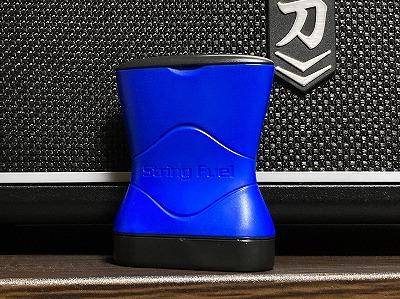
It's easy to use, has a pleasant sweet scent, and performs well. I can't do without it. Additionally, I keep felt types from Fender and GHS on hand as backups.
GHS / FAST-FRET Fingerboard Lubricant
With the felt type, if you find it feels too slippery, you can lightly wipe it with a cloth before playing. As long as you don’t scrub too hard, some oil will remain, providing a better slide compared to uncoated strings.
■ Alternative Use ①
Now, let’s discuss some alternative uses that go beyond just applying it to the strings.
First up is using it for removing oxidation buildup.
For strings that are not yet rusty but have deteriorated to the point of feeling rough, you might not notice much difference even after applying fingerboard lubricant. In such cases, it may be more effective to clean or replace the strings entirely.
However, rough strings are simply difficult to play, and leaving that fine roughness can cause the strings to act like sandpaper, accelerating fret wear. It's best to remove as much of it as possible.
The most reliable method for removing oxidation is to use a metal polish like Pikar or Scratch Mender for polishing. However, this approach can leave abrasive residue on wound strings, which is not ideal.
That's where a non-toxic fingerboard lubricant comes in handy, as it effectively removes oxidation without leaving harmful residues.
Apply the lubricant to a suitable cloth, preferably one with a rough texture, and firmly polish the strings several times. This can effectively remove light oxidation. Once you’ve confirmed the oxidation is gone, wipe off any dirty oil with a clean cloth, and finish with your regular application method for care.
With this method, you don't have to worry like you would with abrasive polishes.
You can use any type of cloth, but sturdy, rough fabrics like denim or canvas will be more effective. Just be careful not to cut the strings while trying it out!
■ Alternative Use ②
Another handy technique is applying the lubricant to the frets.
Using a rectangular felt-type lubricant like MUSIC NOMAD,
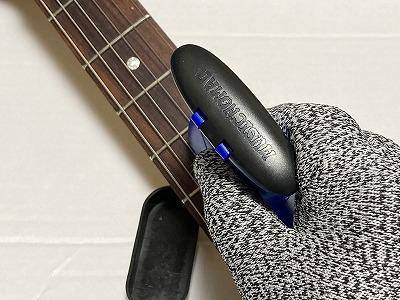
you can apply it parallel to the strings onto the frets. Just be careful not to let it touch the fingerboard!
This technique not only reduces wear from the contact between the strings and frets but also enhances the ease of techniques like bending and vibrato.
The existence of those who prefer direct spraying, despite its drawbacks, likely stems from the fact that it lubricates both the strings and frets, providing a more comfortable playing experience.
By using this parallel application, you can enjoy the benefits of lubrication like with a spray, but without affecting your guitar or surrounding environment. Now you can see why I love using MUSIC NOMAD!
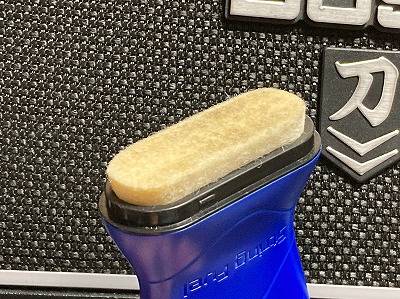
This is perfect for parallel application. If you're concerned about fret wear, I definitely recommend giving it a try!
The “sound & person” column is made up of contributions from you.
For details about contributing, click here.





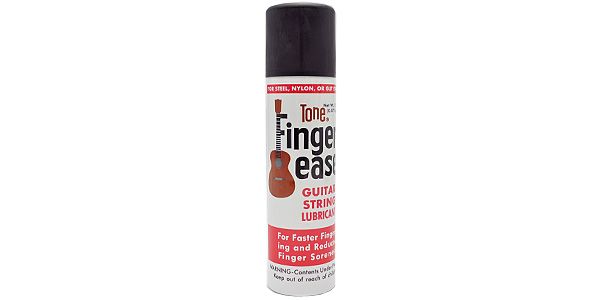
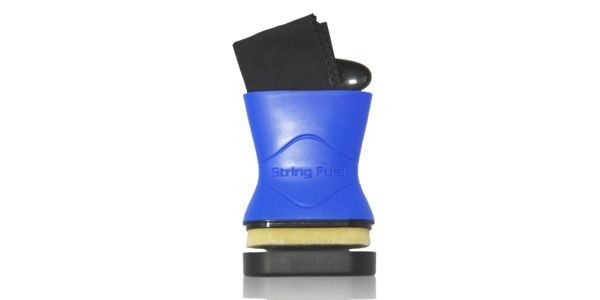
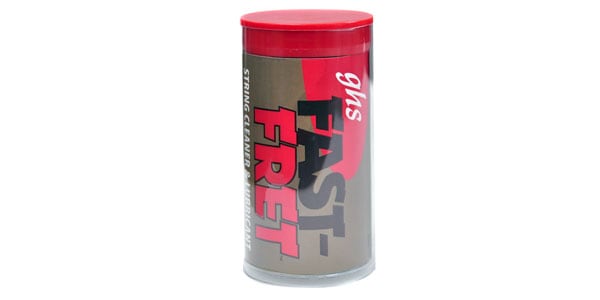







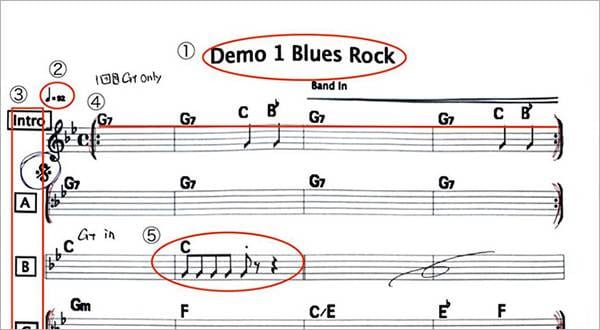

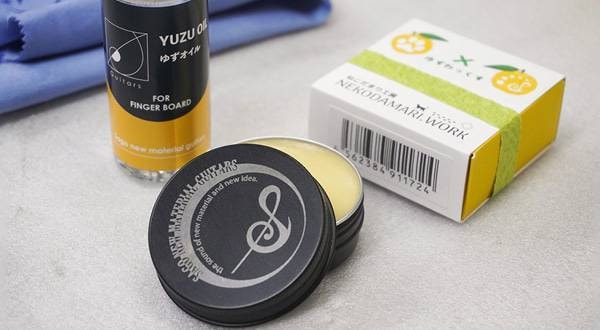

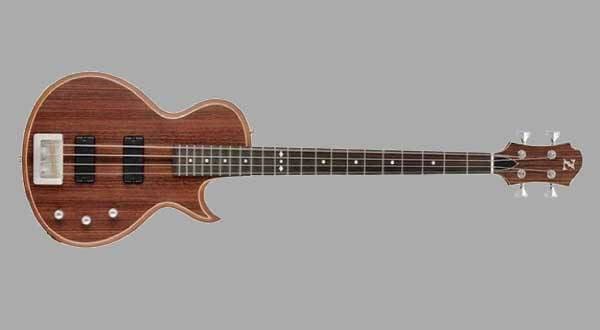

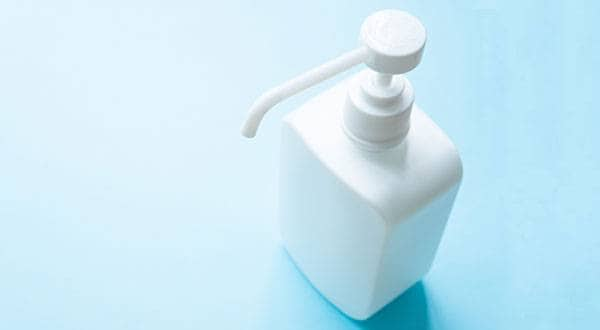
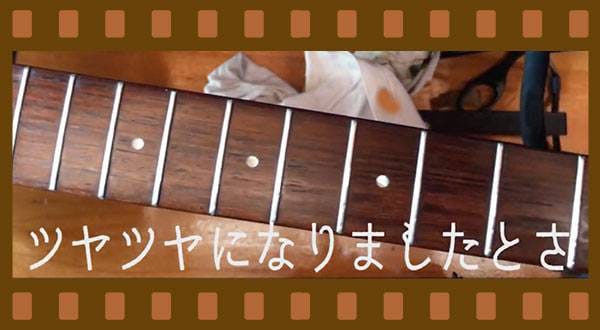
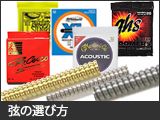 エレキギター弦の選び方
エレキギター弦の選び方
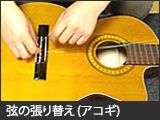 弦の張り替え(アコースティックギター)
弦の張り替え(アコースティックギター)
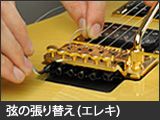 弦の張り替え(エレキギター)
弦の張り替え(エレキギター)
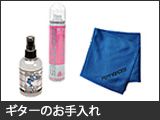 ギターのお手入れ
ギターのお手入れ
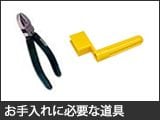 お手入れに必要な道具
お手入れに必要な道具
 ギタースタートガイド
ギタースタートガイド



